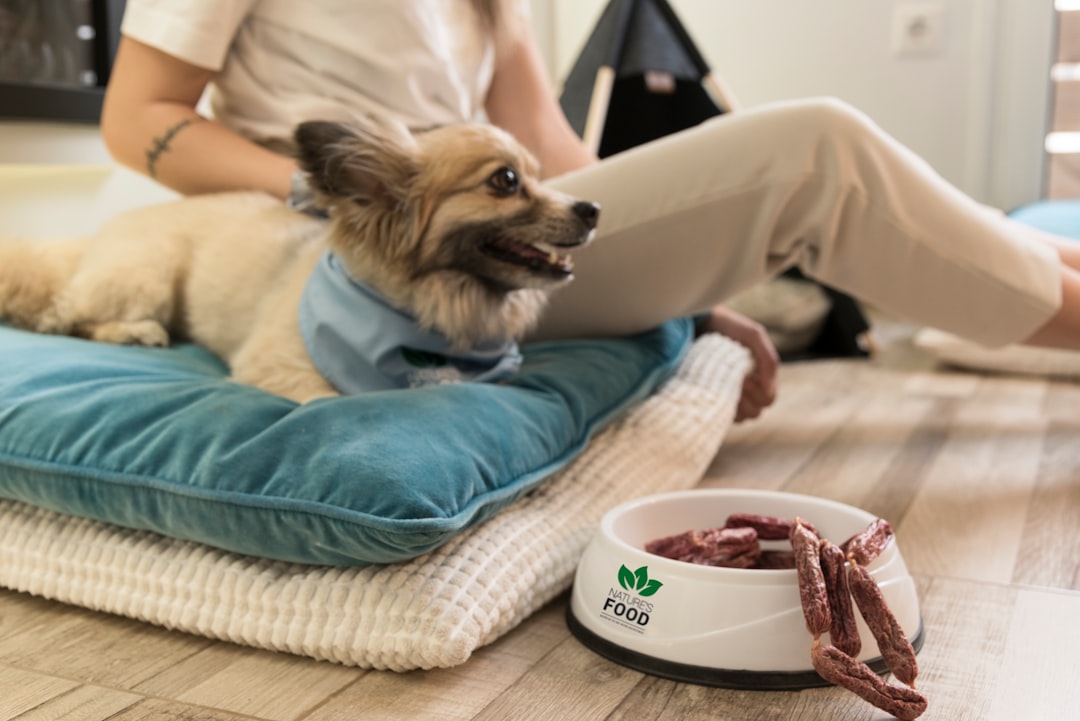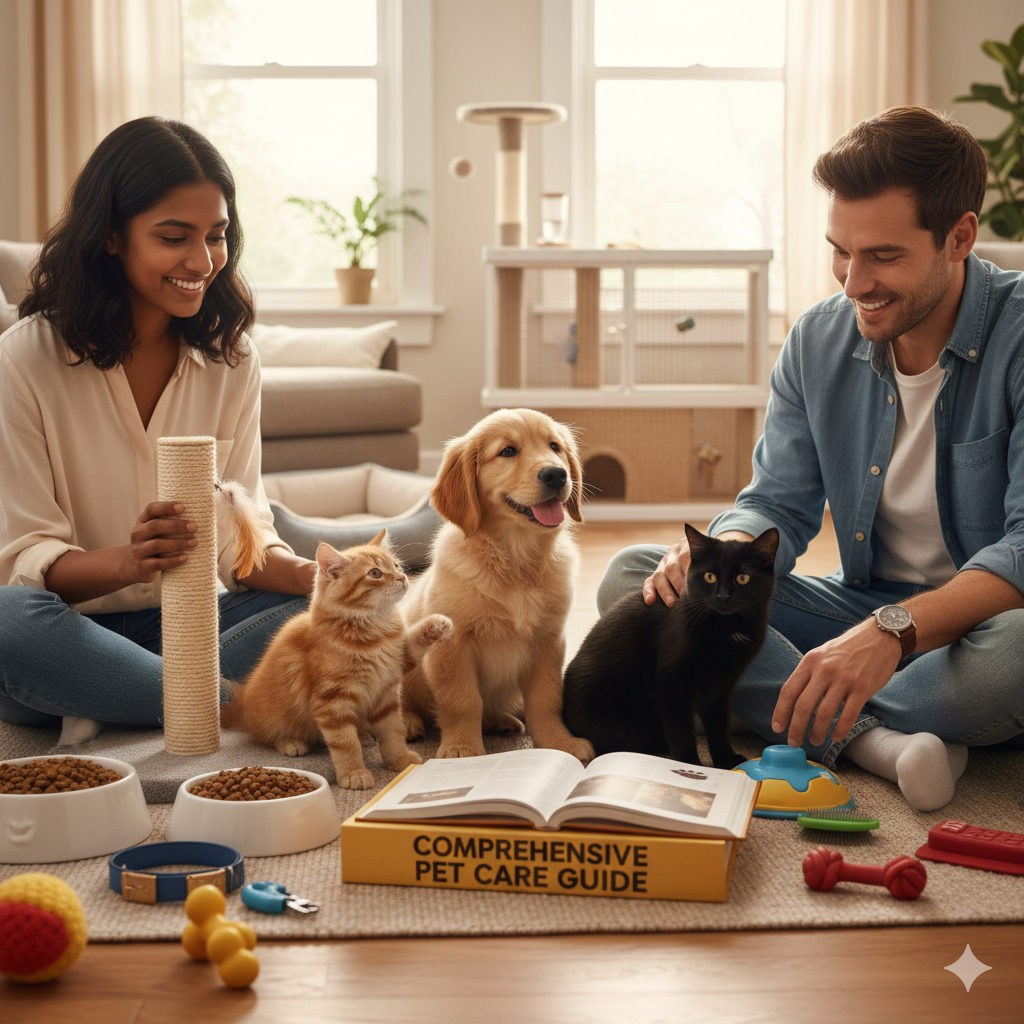The Ultimate Guide to Dog and Cat Enrichment: Boosting Mental and Physical Health
Discover how purposeful mental and physical enrichment transforms your dog or cat’s well-being—helping prevent boredom, anxiety, and destructive behaviors while deepening your bond.
Key Takeaways
- Enrichment meets your pet’s natural instincts through mental, physical, sensory, and social stimulation.
- Puzzle feeders and scent games tap into the instinct to “work” for food, reducing stress and enhancing engagement.
- Training and interactive games build confidence, curb destructive habits, and strengthen your connection.
- DIY toys and rotating routines keep enrichment affordable and continuously interesting for your pet.
- A consistent enrichment routine supports lifelong cognitive health and behavioral balance.
Table of Contents
- 1. Why Enrichment is Essential for Your Dog and Cat’s Well-being
- 2. What is Pet Enrichment? Understanding the Basics
- 3. Puzzle Feeders and Food Puzzles: Making Mealtimes More Engaging
- 4. Scent Games and Sniffing Mats: Tapping Into Natural Instincts
- 5. Training and Interactive Games: Strengthening Bonds and Behavior
- 6. DIY Puzzle Toys and Enrichment: Creative and Cost-Effective Ideas
- 7. Rotating Toys and Routine Changes: Keeping Engagement Fresh
- 8. Behavioral Benefits of Enrichment: Improving Lives for Pets and Owners
- 9. How to Start an Enrichment Routine: Practical Steps
- 10. Specialized Resources and Communities
- Conclusion: Enrich Your Pet’s Life for Lasting Health and Happiness
1. Why Enrichment is Essential for Your Dog and Cat’s Well-being
Keeping your dog or cat happy and healthy goes far beyond the basics of food and shelter. True wellness comes from providing meaningful opportunities for mental and physical engagement. Enrichment allows pets to perform instinctive behaviors like exploring, sniffing, and problem-solving. Without it, many pets suffer boredom, frustration, or stress—often expressed through unwanted habits such as chewing or pacing.
This guide shares the science behind pet enrichment and practical ideas for incorporating it into your pet's daily life, whether you care for a spry puppy or a senior feline. The result? Happier, calmer pets with sharper minds and stronger bonds with you.
2. What is Pet Enrichment? Understanding the Basics
Pet enrichment involves mimicking natural challenges and experiences that dogs and cats would face in the wild—encouraging behaviors such as digging, sniffing, exploring, and “working” for food. Here are the main enrichment categories:
- Mental Stimulation: Puzzle toys and scent-based activities that challenge cognitive skills.
- Physical Activity: Play, exercise, and agility that promote fitness and energy release.
- Sensory Exploration: Novel sights, sounds, textures, and smells that satisfy curiosity.
- Social Interaction: Quality time through training, play, or bonding with you and other pets.
One fascinating concept is contrafreeloading, where pets prefer to earn their food rather than receive it freely. Introducing puzzle feeders taps into this instinct, transforming mealtimes into enriching experiences.
Even small enrichment doses can dramatically improve mental balance and happiness.
Learn more at Animal Behavior Wellness Center | Enrichment ideas from Guide Dogs UK
3. Puzzle Feeders and Food Puzzles: Making Mealtimes More Engaging
Turn mealtimes from routine to rewarding by swapping traditional bowls for puzzle feeders and food-dispensing toys. These stimulate the mind and naturally slow down rapid eaters.
- Prevent gulping: Helps reduce digestive upset.
- Stimulate the mind: Daily problem-solving sharpens cognition.
- Combat boredom: Keeps pets busy when alone.
- Reduce food anxiety: Encourages calm and focus.
Popular choices include the KONG® Wobbler, snuffle mats, and Busy Buddy Twist 'n Treat. On a budget? Try muffin tins, cardboard tubes, or rolled-up towels filled with kibble.
Leveraging contrafreeloading, these tools fulfill your pet’s urge to earn their food.
Top enrichment toys at The Puzzle Feeder | More ideas at Animal Behavior Wellness Center
4. Scent Games and Sniffing Mats: Tapping Into Natural Instincts
Dogs and cats experience the world largely through scent. Scent games engage their innate foraging and tracking abilities, offering mental stimulation while reducing stress.
- Hide-and-Seek Treats: Conceal small treats indoors or outdoors for your pet to find.
- Snuffle Mats: Fabric mats with layers that hide kibble deep, encouraging deep sniffing.
- Scatter Feeding: Toss kibble across a safe area for a healthy sniff-and-find meal.
- Scent Trails: Drag a treat or toy to make a scent path for your pet to follow.
Besides stimulating brains, scent work builds confidence, especially in anxious pets. Cats also benefit, appreciating hunting-like challenges.
Scent enrichment tips from Guide Dogs UK | Thinking Outside the Cage resources | More ideas at Preventive Vet
5. Training and Interactive Games: Strengthening Bonds and Behavior
Training does more than teach commands—it mentally stimulates your pet and deepens your relationship. Short daily sessions ease anxiety and boost confidence.
- Hide and Seek: Call your pet and reward them for finding you.
- Teach New Tricks: “Sit,” “paw,” or “high five” challenge and engage your pet.
- Impromptu Agility: Create obstacle courses using cushions and furniture.
- Scent Work Training: Add cues to scent games to enhance focus.
Pair treats with these activities for extra motivation and benefits.
Training resources at Animal Behavior Wellness Center | Mental stimulation ideas from PetMD | Creative training from The Doggy Lady
6. DIY Puzzle Toys and Enrichment: Creative and Cost-Effective Ideas
Enrichment doesn’t need to be expensive. Simple household items can be transformed into engaging toys tailored to your pet’s preferences.
- Muffin Tin Puzzle: Hide treats in cupcake spaces, cover some with tennis balls.
- Towel Roll-Ups: Wrap treats inside old towels to unroll.
- Cardboard Challenges: Fill empty boxes or tubes with kibble as foraging puzzles.
- Frozen Treat Cubes: Freeze treats in ice blocks for a cool puzzle on warm days.
- Upcycled Bottles: Poke holes in plastic bottles for treat dispensing.
Rotate DIY toys and adjust difficulty to keep novelty strong while reusing materials sustainably.
DIY enrichment ideas at the ASPCA | More projects at Preventive Vet
7. Rotating Toys and Routine Changes: Keeping Engagement Fresh
Even your pet’s favorite toy can lose appeal if it’s always available. Adding rotation and routine changes provides new stimuli that keep enrichment effective.
- Swap toys every few days to maintain novelty.
- Vary walking routes to introduce new sights and scents.
- Offer safe natural or recycled materials for exploration.
- Mix indoor and outdoor games to diversify engagement.
Small changes keep your pet’s brain active and reduce boredom-linked behaviors.
Rotating toy tips at Preventive Vet | Additional ideas from Thinking Outside the Cage
8. Behavioral Benefits of Enrichment: Improving Lives for Pets and Owners
Regular enrichment transforms behavior and quality of life by:
- Reducing anxiety: Provides outlets for excess energy and stress.
- Curbs destructive habits: Redirects chewing, scratching, or pacing into positive outlets.
- Supports brain health: Maintains cognitive function and delays aging effects.
- Boosts confidence: Fosters success through problem-solving.
- Deepens bonding: Shared activities increase trust and communication.
Often, enriched pets are happier, calmer, and better companions — a payoff for both pet and owner.
Behavioral benefits at Guide Dogs UK | DIY and behavior support via ASPCA | Additional reading at PetMD
9. How to Start an Enrichment Routine: Practical Steps
Starting enrichment is easier than you think. Follow these practical steps:
- Get to know your pet: Note their breed, personality, age, and activity level.
- Begin with puzzle feeders: Make mealtime more engaging immediately.
- Incorporate daily play or training: 10-minute sessions can be very effective.
- Add scent or foraging activities: Spark curiosity through natural behaviors.
- Rotate toys and DIY projects: Keep things novel and stimulating.
- Observe and adjust: Tailor activities to what your pet enjoys or struggles with.
- Use expert resources: Draw inspiration and troubleshooting from trusted sites and communities.
Consistency is key. Regular enrichment weaves into your pet’s lifestyle produces lasting benefits.
10. Specialized Resources and Communities for Pet Enrichment
For ongoing inspiration and support, explore these trusted resources:
- Fear Free Certified Resources for stress-free enrichment strategies.
- Animal Behavior Wellness Center for extensive enrichment tools.
- Guide Dogs UK for welfare-focused enrichment ideas.
- Online communities and Facebook groups where you can share, learn, and connect with fellow pet enthusiasts.
Joining these groups encourages fresh ideas and ongoing motivation to keep your pet’s routine vibrant.
Conclusion: Enrich Your Pet’s Life for Lasting Health and Happiness
Incorporating enrichment into your pet’s everyday life is one of the most impactful investments you can make in their lifelong health and happiness. Toys, scent games, training, and puzzles help reduce stress, prevent unwanted behaviors, sharpen cognition, and strengthen your bond.
Embrace the power of contrafreeloading—allow your pet to earn their rewards and truly enjoy them. With consistent effort, enrichment will become a natural, joyful part of your pet’s daily routine.
Ready to get started? For expert advice, enrichment tools, and accessories, visit Petocart’s online store and blog.
FAQ
Q: How often should I provide enrichment for my pet?
A: Daily enrichment is ideal, even just 10-15 minutes of training, play, or puzzle activity. Consistency builds mental and physical health over time.
Q: Are puzzle feeders suitable for all dogs and cats?
A: Most pets benefit, but start with easy puzzles and supervise to ensure safety. Adjust complexity based on your pet’s experience and interest.
Q: Can enrichment help with behavioral problems?
A: Yes, enrichment offers positive outlets for energy and anxiety, often reducing destructive or anxious behaviors when used consistently.
Q: What are some easy DIY enrichment ideas?
A: Try muffin tin puzzles, towel roll-ups, or cardboard boxes filled with kibble. These homemade toys are fun, affordable, and customizable.
Q: How does enrichment improve the pet-owner bond?
A: Shared training and play increase communication and trust, fostering a deeper, more rewarding relationship between you and your pet.







